
The bill was introduced by Assemblywoman Wendy Carrillo in March. Photo by Photo by Sean Pierce
A newly-introduced bill seeks to provide reparations, compensation, accountability and the establishment of a permanent memorial for the hundreds of families displaced in the area formerly known as Chavez Ravine, where Dodger Stadium was built.
The Chavez Ravine Accountability Act or AB 1950, introduced in the California Legislature in late March, aims to address the historical injustice that forced the majority Mexican American community out of their homes in the 1950s and 1960s.
But the many residents of La Loma, Palo Verde and Bishop who are still alive, and other descendants of those families believe the bill, as it is written today, needs more work.
Buried Under the Blue is a nonprofit organization created by Melissa Arechiga, Jeannie Arechiga and Vincent Montalvo, who are descendants of displaced families. The organization aims to raise awareness of the displacement legacy of La Loma, Palo Verde and Bishop. The organization feels the name designated as Chavez Ravine is incorrect because it us used by the Dodger organization as marketing.
Montalvo said that although the organization is happy for the city’s commitment to address the historic inequities towards members and families of Palo Verde, La Loma and Bishop, the bill needs improvements and hopes these are addressed before they can fully support it. “We want to work with [Carrillo] and we are open to continuing to do that. We know how important this is,” Montalvo said.
According to Montalvo, Buried Under the Blue was not aware of the intention to create AB 1950 and found out about the bill only two weeks before the bill’s announcement at the official press conference held on March 22.
For Buried Under the Blue, the bill is missing the names of the responsible parties and elected officials who, at the time, facilitated the removal of hundreds of families in the area. Montalvo said the writing of the bill contains a lot of gray language.
Although the motion does mention the Dodgers when telling the history of the area, Buried Under the Blue points out that the bill does not seek for them to be held accountable and often refers to the team solely as “an entity” throughout the bill's text. The bill was introduced by Assemblywoman Wendy Carrillo, who currently represents the 52nd State Assembly District, which is home to approximately 500,000 residents in the City of Los Angeles and South Glendale.
“For generations, Chavez Ravine stood as a beacon of hope and resilience, embodying the dreams and aspirations of families who built their lives within its embrace,” Carrillo said in March. “With this legislation, we are addressing the past, giving voice to this injustice, acknowledging the pain of those displaced, offering reparative measures and ensuring that we honor and remember the legacy of the Chavez Ravine community."
Before the three neighborhoods of La Loma, Palo Verde and Bishop intertwined to form the 315-acre area, a valley a few miles northeast of downtown of L.A., there was Julian Chavez, a rancher, assistant mayor and city councilman who also became one of LA County’s first supervisors in the 1800s.
In what was previously known as Stone Quarry Hills, an area with several ravines, Chavez began buying land in 1844, which, not long after his passing in 1879, would house semi-rural communities between the Sulphur and Cemetery ravines.
In the early 1900s, the majority of families in the area were Mexican American who were red-lined and prevented from settling in other neighborhoods.
The tranquility of those who lived in these neighborhoods came to a halt when the Federal Housing Act of 1949 reduced housing costs, raised housing standards and granted money to cities from the federal government to “clear slums and rebuild blighted areas,” as stated in the act.
Because of the act, a plan for a public housing project, Elysian Park Heights, was mapped out to include more than 1,000 units—two dozen 13-story buildings and 160 two-story townhouses—as well as several new schools and playgrounds, designed by architects Robert E. Alexander and Richard Neutra.
It was a year later when residents received letters from the city informing them that, in order for the land to become available for the plan, they would need to sell their homes. They were also told that those displaced could live in the new housing.
While many families initially resisted abandoning their homes, through efforts of offering immediate cash payments, using the power of eminent domain, or lowballing, the majority of residents were moved out by 1953, when the project fell through.
After the city bought back the land for the promise of public use, only a handful of families still remained in the area. In June 1958, a referendum was approved to trade the land to the then-Brooklyn Dodgers owner, Walter O’Malley, and on May 9, 1959, residents were forcibly evicted by bulldozers and sheriff deputies.
The violent uprooting and displacement of these families forced more than 1,800 families from their homes and businesses. It replaced a once tight-knit community with a legendary baseball stadium Angelenos are so fond of today, which has left a lasting impact on the livelihoods of the displaced families and generations that followed.
"AB 1950 is about confronting a historical injustice and ensuring Angelenos understand the true story of Chavez Ravine," said Insurance Commissioner Ricardo Lara, one of the bill's sponsors, last month. "Only by acknowledging the past can we work towards a more just and equitable future for all communities in Los Angeles."
Today, the bill requires the City of L.A. to decide on a tax-exempt compensation for the families.
Compensation can be in the form of conveying city-owned real property for housing. The housing must be equal to the square footage of land acquired by the city from the property owners. Monetary compensation is also an option for the taking of the former landowners’ private property, yet the money must be equal to the fair market value at the time of sale or taking, adjusted for inflation.
As stated in the official text, the bill would also help establish a permanent memorial of the community in 2028, y, where the stadium stands today, to honor the displaced families and acknowledge the displacement that occurred more than seven decades ago. To preserve the history of the enriched community, the bill also asks for a searchable database to be created by 2027, where the history of land acquisition will live, be archived and will also help to verify eligible recipients of the compensation.
Finally, the bill also stated that the methods, timeline, and plans for compensation should be presented and made available to the public by January 1, 2029.
“The promises of new permanent housing would be abandoned, and land titles would never be returned to the original owners. By 1958, the Elysian Park Heights housing project had unraveled, and the city conveyed the Chavez Ravine land to a private entity for an insignificant amount considering the land’s value. The private entity built a sports stadium and parking lot on the site,” the bill reads. Montalvo said that removing those responsible erases the complete narrative of what happened during the displacement.
“We are working with [Carrillo] and we will continue to work with her because we want the bill to happen. But we're not going to sell ourselves out,” Montalvo said. “The story must be told accurately. The bill does not mention the Dodgers and the bill also does not mention the elected officials that were part of the deal or the corruption of it.”
Buried under the Blue believes the Dodgers should be involved in the reparations, since, according to them, the team continues to benefit from the land. “They have to be held accountable. Anything else is a pass and it is not reparations,” Montalvo said.
Montalvo also told CALÒ News that even the topic of reparations is challenging. “Land back can only be claimed by the first lineal descendants of the territories, and we recognize the Kizh Nation and the Indigenous people of the land, before the Palo Verde, La Loma and Bishop were ever built,” he said.
Running their own church, elementary and grocery store, residents from La Loma, Palo Verde and Bishop grew their own food and raised animals such as pigs, goats and turkeys. While those on the outside looked at the community as a slum and eyesore, the neighborhood, “was a self-sufficient and tight-knit community, a rare example of small-town life within a large urban metropolis.”
For years, Montalvo has heard the stories of La Loma, Palo Verde and Bishop since he was a kid. His grandmother, grandfather, and mother were all born and raised in Palo Verde and are still alive today. “When I used to listen to my grandfather's stories about the way everyone in those communities cared for each other, I'd tell him it sounded like a beautiful fantasy,” he said. “He would tell me stories about people who used to go play up in Elysian Park, and there were avocado trees, and people would go sit up there and eat, cook together and help each other with the maintenance of their homes and today that sounds so surreal.”
For Buried Under the Blue, their biggest concern is that what happened to their communities doesn’t continue to happen in neighborhoods of color today. “Look at your community. Are you happy there? Are you facing eviction? Because those circumstances are no different than the fears that our people felt when they got the letters of eviction,” Montalvo said.
CALÒ News reached out to Carillio and Lara but did not receive any response before the publication of this story.
For more information about Buried the Blue visit: https://www.buriedundertheblue.com/

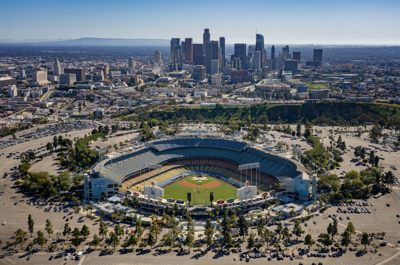
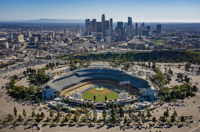

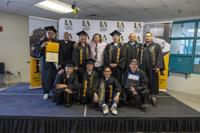



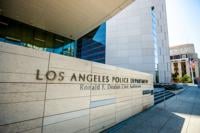

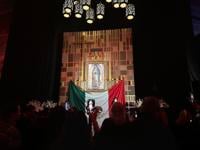
(0) comments
Welcome to the discussion.
Log In
Keep it Clean. Please avoid obscene, vulgar, lewd, racist or sexually-oriented language.
PLEASE TURN OFF YOUR CAPS LOCK.
Don't Threaten. Threats of harming another person will not be tolerated.
Be Truthful. Don't knowingly lie about anyone or anything.
Be Nice. No racism, sexism or any sort of -ism that is degrading to another person.
Be Proactive. Use the 'Report' link on each comment to let us know of abusive posts.
Share with Us. We'd love to hear eyewitness accounts, the history behind an article.